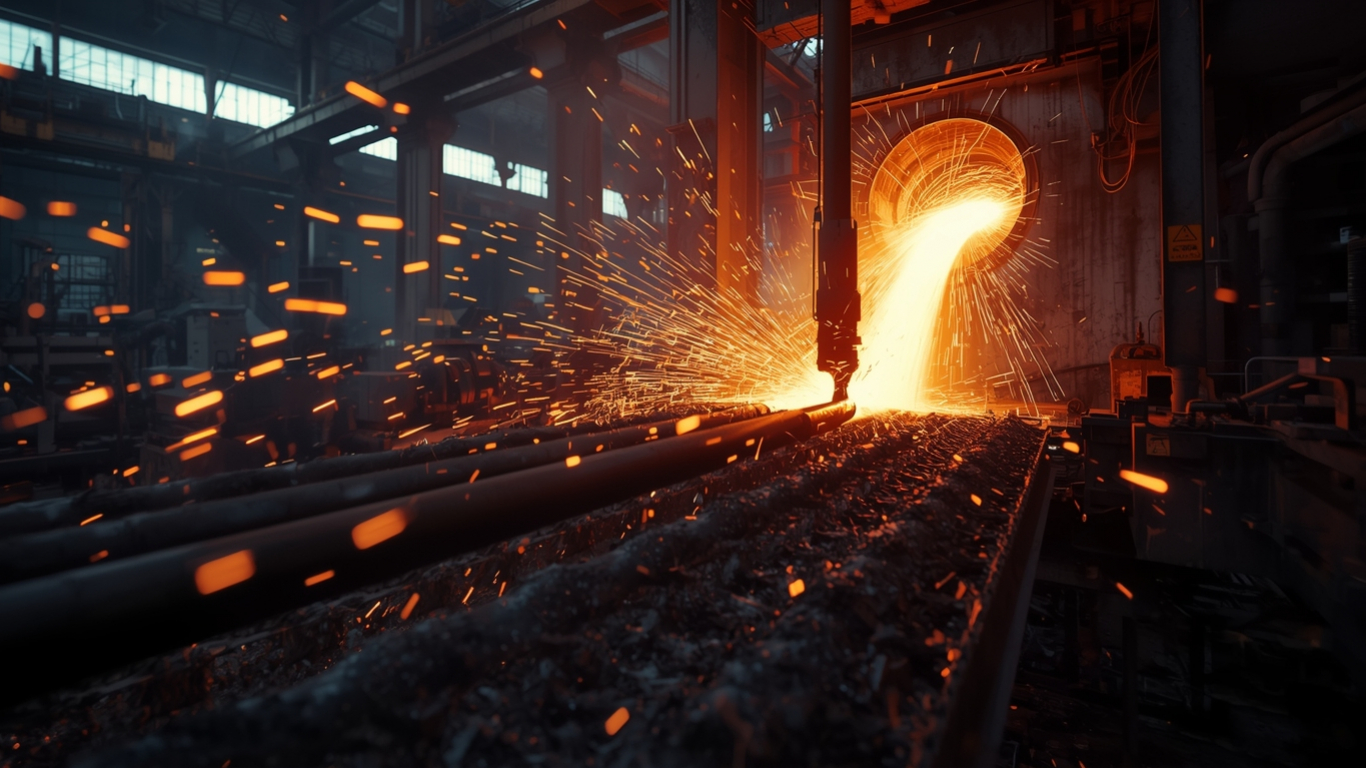In industrial environments where extreme temperatures and electrical conductivity are a daily norm, graphite electrodes play a critical role. These cylindrical components, crafted from carbon-based materials, are the preferred choice for industries like steelmaking, non-ferrous metallurgy, and silicon production—largely due to their ability to withstand intense heat while efficiently conducting electricity.
What Are Graphite Electrodes?
Graphite electrodes are high-strength, carbon-based rods used to conduct electrical energy into electric arc furnaces (EAFs). These furnaces generate the high temperatures needed to melt scrap metal and raw materials in steel plants. The electrodes themselves are made through a meticulous process involving raw materials like petroleum coke and needle coke, followed by high-temperature baking, graphitization, and machining.
The final product is a durable, thermally stable electrode capable of handling temperatures beyond 3,000°C while maintaining structural integrity. Their primary function? To deliver powerful electric currents into the furnace, where that energy is transformed into heat for melting and refining operations.
Industrial Applications of Graphite Electrodes
While steel production remains the dominant industry using graphite electrodes, several other sectors also rely on their properties:
- Foundries & Metal Recycling: Melting down scrap metal for reuse
- Silicon and Ferroalloy Production: Where precise thermal control is essential
- Chemical Processing: Where consistent electrical conductivity is required in corrosive environments
Their consistent performance, even in prolonged heat cycles, makes them a trusted component in modern manufacturing environments.
Types of Graphite Electrodes
Different processes demand different types of electrodes. Here are the most common:
- Regular Power (RP): Suitable for low-density operations with small furnaces.
- High Power (HP): Used in mid-range EAFs where medium current levels are involved.
- Ultra-High Power (UHP): Ideal for large-scale industrial furnaces requiring the highest conductivity and thermal resistance.
Choosing the right grade ensures optimal furnace performance, energy efficiency, and longer electrode life.
Why Graphite Electrodes Are a Better Choice
One of the primary reasons graphite electrodes dominate the EAF industry is their unique combination of properties:
- Exceptional Conductivity: Allowing fast and consistent melting of materials.
- High Thermal Resistance: Performance remains stable even at extreme temperatures.
- Low Thermal Expansion: Reduces the risk of cracking or breaking during heat cycles.
- Mechanical Strength: Withstands high-stress operations without losing performance.
These qualities collectively improve productivity, lower energy costs, and enhance furnace reliability—making them indispensable in high-performance industrial settings.
Handling and Storage Best Practices
Despite their strength, graphite electrodes must be handled with care. Storing them in dry, controlled environments ensures moisture does not seep into the material, which could cause explosions or fractures when exposed to heat. Operators should avoid direct contact with the electrode tips and ensure lifting is done using approved tools to prevent mechanical damage.
Proper storage and handling not only extend electrode life but also contribute to operational safety and reduced downtime.
A Material for the Future
With growing demand for recycled steel and sustainable metal processing, the role of graphite electrodes is expanding. Industries are seeking more energy-efficient solutions, and electric arc furnaces powered by these electrodes are a step forward in that direction.
Furthermore, as advancements in material science evolve, we can expect the development of next-generation graphite electrodes that offer even greater performance, longer lifespan, and reduced environmental impact.
Conclusion
Graphite electrodes are more than just furnace components—they are the unseen force behind modern industrial operations. Their ability to perform under extreme heat and pressure makes them essential for efficient, cost-effective, and sustainable production. As industries move toward greener and smarter technologies, the demand for high-quality graphite electrodes will only grow.







